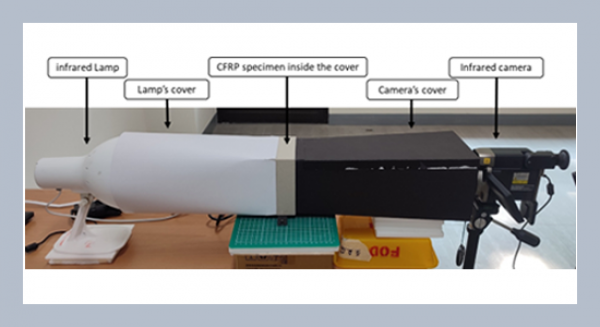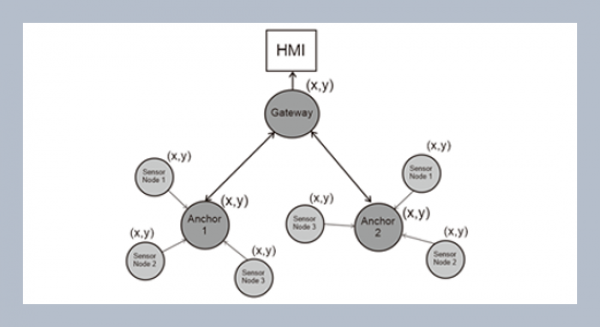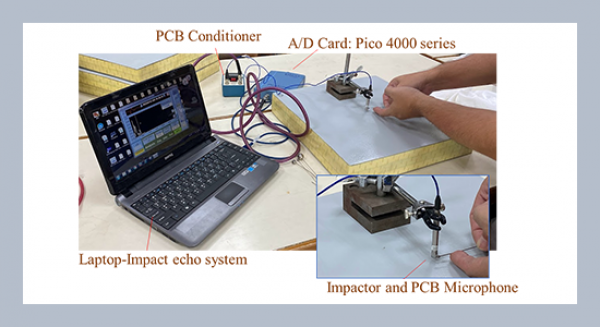P. Padmajaa* and Y. N. Reddyb aDepartment of Mathematics, Prasad V Potluri Siddhartha Institute of Technology, Vijayawada, Andhra Pradesh, India
bDepartment of Mathematics, National Institute of Technology, Warangal, India
Download Citation:
|
Download PDF
In this paper, we present a numerical patching method for solving a class of singularly perturbed two point boundary value problems with a boundary layer at one end point. In order to know the behavior of the solution of the singular perturbation problem in the boundary layer region, it is always suggestive to solve the problem in outer and boundary layer regions separately. By constructing a modified problem with a boundary layer correction, the boundary layer is dealt with separately and series method used. The condition at infinity will be applied to the corresponding Padé approximates of the obtained series solution. Several problems are solved to demonstrate the applicability and efficiency of the proposed method. It is observed that the present method approximates the exact solution very well.ABSTRACT
Keywords:
Singular perturbation problems; boundary layer; boundary layer correction; Pade’ approximates.
Share this article with your colleagues
[1] O’Malley, R. E. 1974. “Introduction to singular perturbations”. Academic press, New York.REFERENCES
[2] Nayfeh, A. H. 1973. “Perturbation methods”. Wiley, New York.
[3] Kevorkian, J. and Cole, J. D. 1981. “Perturbation methods in Applied Mathematics”. Springer-Verlag, New York.
[4] Bender, C. M. and Orszag, S. A. 1978. “Advanced mathematical methods for Scientists and Engineers”. Mc Graw-Hill, New York.
[5] Hemker, P. W. 1977. “A numerical study of stiff two point boundary problems”. MCT 80, Mathematical centre, Amsterdam.
[6] Hemker, P. W. and Miller, J. J. H. (Eds.) 1979. “Numerical Analysis of singular perturbation problems”. Academic Press, New York.
[7] Miller, J. J. H. (Ed.) 1993. “Application of Advanced Computational Methods for Boundary and Interior Layers”. Boole Press, Dublin.
[8] Miller, J. J. H. (Ed.) 1980. “Boundary and Interior Layers: Computational and Asymptotic methods (BAIL I) ”. Boole Press, Dublin.
[9] Miller, J. J. H. (Ed.) 1984. “Boundary and Interior Layers: Computational and Asymptotic methods, (BAIL III) ”. Boole Press, Dublin.
[10] Miller, J. J. H. (Ed.) 1982. “Computational and Asymptotic Methods for Boundary and Interior Layers, (BAIL II) ”. Boole Press, Dublin.
[11] Miller, J. J. H. (Ed.) 1991. “Computational Methods for Boundary and Interior Layers in several Dimensions”. Boole Press, Dublin.
[12] Miller, J. J. H. 1975. A finite element method for a two-point boundary value problems with a small parameter affecting the highest derivative, Banach Center Publications, 3, 143-146.
[13] Miller, J. J. H., O’Riordan, E., and Shishkin, G. I. 1996. “Fitted Numerical methods for singular perturbation problems”. World Scientific, River Edge, NJ.
[14] Axelsson, O., Frank, L. S., and Van Der Sluis, A. ( Eds. ) 1981. “Analytical and Numerical Approaches to Asymptotic Problems in Analysis”. North-Holland Publishers, Amsterdam.
[15] Doolan, E. P., Miller, J. J. H., and Schilders, W. H. A. 1980. “Uniform Numerical Methods for problems with Initial and Boundary Layers”. Boole Press, Dublin.
[16] Holmes, M. H. 1995. “Introduction to perturbation methods”. Springer Verlag, Berlin.
[17] Miranker, W. L. 1981. “Numerical Methods for Stiff Equations and Singular Perturbation Problems”. Reidel, Dordrecht.
[18] Morton, K. W. 1995. “Numerical solution of convection - diffusion problems”. Oxford University press.
[19] Aiken, R. C. (Ed.) 1985. “Stiff Computation, Oxford University Press”. Oxford, England.
[20] Ardema, M. D. (Ed.) 1983. “Singular Perturbations in systems and control”. Springer Verlag, New York.
[21] Goering, H., Felgenhauer, A., Lube, G., Roos, H.G., and Tobiska, L. 1983. “Singularly Perturbed differential equations”. Akademic-Verlag, Berlin.
[22] Roos, G., Stynes, M., and Tobiska, L. 1996. “Numerical methods for singularly perturbed differential equations”. Springer Verlag, Berlin.
[23] Kadalbajoo, M. K. and Reddy, Y. N. 1989. Asymptotic and numerical analysis of singular perturbations; A Survey , Applied Mathematics and computation, 30: 223-259.
[24] Chawla, M. M. 1978. A fourth order tridiagonal finite difference method for general nonlinear two point boundary value problems with mixed boundary conditions, Journal of Institute of Mathematics and its applications, 21: 83-93.
[25] Su, Y. C. and Wu, Q. G. 1991. “An introduction to numerical methods for the singular perturbation problems (in Chinese) ”. Chongquing publishing house, Chongqing.
[26] Andargie, A. and Reddy, Y. N. 2007. Fitted fourth order tridiagonal finite difference method for singular perturbation problems, Applied mathematics and computation, 192, 90-1000.
[27] Stynes, M. and O’Riordan, E. 1986. A uniformly accurate finite element method for singular pertuebation problem in conservative form, SIAM journal of numerical analysis, 23: 369-375.
[28] Kadalbajoo, M. K. and Reddy, Y. N. 1988. A boundary value method for a class of non linear singular perturbation problems, Communications in Applied Numerical methods, 4: 587-594.
[29] Vigo-Aguiar, J. and Natesan, S. 2004. A parallel boundary value technique for singularly perturbed two point boundary value problems, The Journal of super computing, 27: 195-206.
[30] Lei Wang. 2004. A novel method for a class of nonlinear singular perturbation problems, Applied Mathematics and computation, 156: 847-856.
[31] Kadalbajoo, M. K. and Reddy, Y. N. 1987. Initial value technique for a class of non-linear singular perturbation problems, Journal of Optimization Theory and Applications, 53: 395-406.
[32] Reddy, Y. N. and Chakravarthy, P. P. 2004. An initial value approach for singularly perturbed two point boundary value problems, Applied mathematics and computation, 155: 95-110.
[33] Kadalbajoo, M. K. and Kumar, D. 2009. Initial value technique for singularly perturbed two point boundary value problemsusing an exponenetially fitted finite difference scheme, Computers and mathematics with applications, 57: 1147-1156.
[34] Aziz, T. and Khan, A. A. 2002. A spline method for second order singularly perturbed boundary value problems, Journal of computational and applied mathematics, 147: 445-452.
[35] Tirmizi, I. A., Fazal-i-Haq, and Siraj-ul-Islam. 2008. Non polynomial spline solution of singularly perturbed boundary value problems, Applied mathematics and computation, 196: 6-16.
[36] Jain, M. K., Iyengar, S. R. K., Jain, R. K. 1991. “Numerical methods for scientific and Engineering computation”. Wiley Eastern Limited, New Delhi.
[37] Reinhardt, H. J. 1980. Singular perturbation problems of difference methods for linear ordinary differential equations, Journal of applicable analysis, 10: 53-70.
ARTICLE INFORMATION
Received:
2012-07-17
Revised:
2012-09-24
Accepted:
2012-10-01
Available Online:
2013-03-01
Padmaja, P., Reddy, Y.N. 2013. A numerical patching method for solving singular perturbation problems via padé approximates. International Journal of Applied Science and Engineering, 11, 51–67. https://doi.org/10.6703/IJASE.2013.11(1).51
Cite this article:















